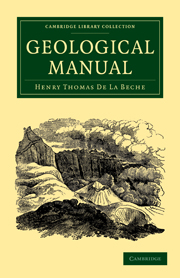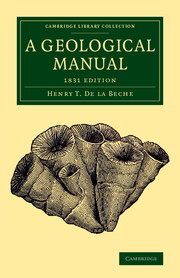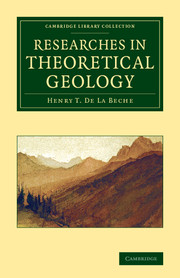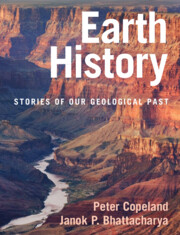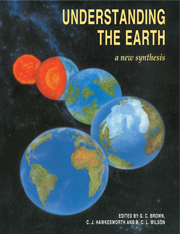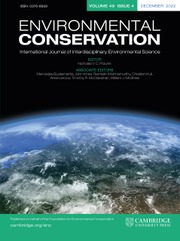A Geological Manual
Henry De la Beche (1796–1855) was a geologist who published widely on various aspects of this science and was elected to the Royal Society in 1823. He was involved with the Ordnance Survey maps of Britain, and became president of the Geological Society in 1847. De la Beche was also instrumental in the 1851 opening of two influential institutions: the Museum of Practical Geology and the School of Mines and of Science Applied to the Arts, which were housed on the same site in London. His Geological Manual, first published in 1831, also had French, German and US editions. In this expanded third edition, published in 1833, the work offers a comprehensive survey of multiple aspects of geology. Topics covered include an overview of the Earth, rivers, glaciers, rock types and fossils in France and England, demonstrating the range and depth of geological knowledge in the early nineteenth century.
Product details
May 2011Paperback
9781108072557
648 pages
216 × 140 × 36 mm
0.81kg
Available
Table of Contents
- Preface
- Section I:
- 1. Figure of the Earth
- 2. Density of the Earth
- 3. Superficial distribution of land and water
- 4. Saltness and specific gravity of the sea
- 5. Temperature of the Earth
- 6. Temperature of springs
- 7. Temperature of the sea and of lakes
- 8. Temperature of the atmosphere
- 9. Valleys
- 10. Changes on the surface of the globe
- 11. Classification of rocks
- Section II:
- 12. Degradation of land
- 13. Rivers
- 14. Glaciers
- 15. Delivery of detritus into the sea
- 16. Action of the sea on coasts
- 17. Shingle beaches
- 18. Sandy beaches
- 19. Tides
- 20. Currents
- 21. Transporting power of tides
- 22. Transporting power of currents
- 23. Active volcanos
- 24. Extinct volcanos
- 25. Mineral volcanic products
- 26. Volcanic dykes, etc.
- 27. Earthquakes
- 28. Hurricanes
- 29. Gaseous exhalations
- 30. Deposits from springs
- 31. Naphtha and asphaltum springs
- 32. Coral reefs and islands
- 33. Submarine forests
- 34. Raised beaches and masses of shells
- 35. Organic remains of the modern group
- Section III:
- 36. Erratic blocks and gravel
- 37. Ossiferous caverns and osseous breccia
- Section IV:
- 38. Supracretaceous (tertiary) group
- 39. Volcanic action during the supracretaceous period
- Section V:
- 40. Cretaceous group (chalk and green sand)
- 41. Wealden rocks
- Section VI:
- 42. Oolitic group
- Section VII:
- 43. Red sandstone group
- Section VIII:
- 44. Carboniferous group
- Section IX:
- 45. Grauwacke group
- Section X:
- 46. Inferior stratified or non-fossiliferous rocks
- Section XI:
- 47. Unstratified rocks
- Section XII:
- 48. On the mineralogical differences in contemporaneous rocks
- 49. On the elevation of mountains
- 50. On the occurrence of metals in rocks
- Section XIII:
- 51. Organic remains in the supracretaceous blue marl of the south of France
- 52. Organic remains in the supracretaceous rocks of Bordeaux and Dax
- 53. Gosau fossils
- 54. Organic remains of the cretaceous group, of the Wealden rocks of England, of the Oolitic group, of the red or variegated marl, of the muschelkalk, of the red or variegated sandstone, of the Zechstone, of the coal measures, of the carboniferous limestone, of the grauwacke group
- Appendix
- Index.

